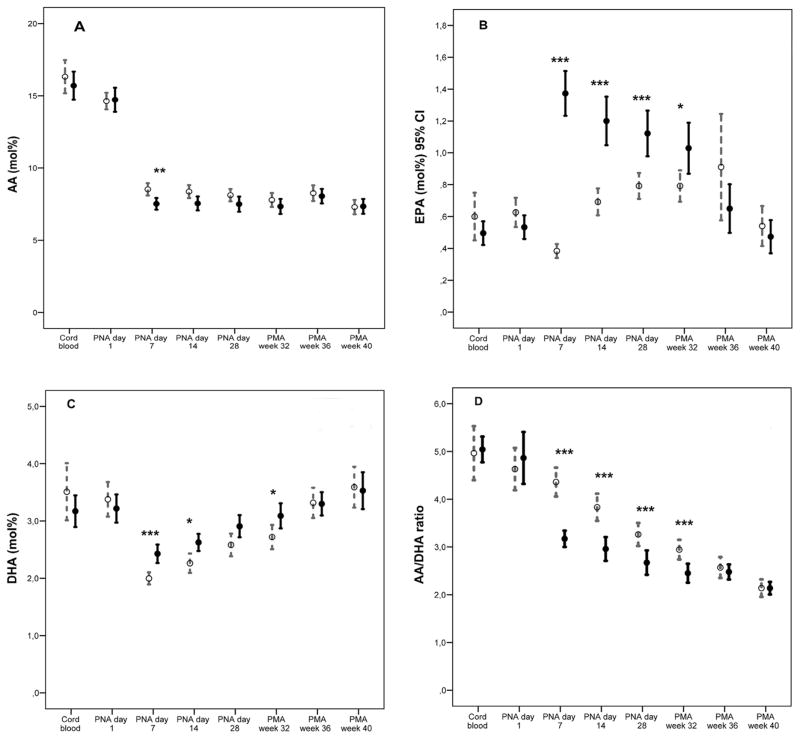Fig. 2.
Longitudinal development of AA, EPA, and DHA in infants receiving SMOFlipid® (n = 41) and Clinoleic® (n = 37), infants on SMOFlipid depicted with solid dots and infants on Clinoleic depicted with open dots. P-values were calculated for the differences both uncorrected and corrected for repeated measurements. Corrections performed by the Bonferroni–Holm procedure are given in the figures. *p-value< 0.05; **p-value <0.01; ***p-value <0.001 (A) Decreased AA levels from birth to one week after birth by approximately 50% with no subsequent increase. Infants on SMOFlipid® had significantly lower levels at 7 days after birth compared to infants receiving Clinoleic®. (B) Infants on SMOFlipid® had significantly increased EPA levels (between 30% and 350% times higher) than infants on Clinoleic® from one week after birth up to a postmenstrual age corresponding to 32 weeks. (C) Decreased DHA levels from birth to one week after birth by approximately 50%; cord blood levels were not reached until an age corresponding to postmenstrual age 36 weeks. Infants on SMOFlipid® had significantly higher levels (between 12% and 20% times higher) at 7 and 14 days after birth and at postmenstrual age corresponding to 32 weeks compared to infants receiving Clinoleic®. Significantly lower omega-6 AA to omega-3 DHA ratio in infants receiving SMOFlipid® was seen from first week of life to PMA 32 weeks (Fig. 2D).

